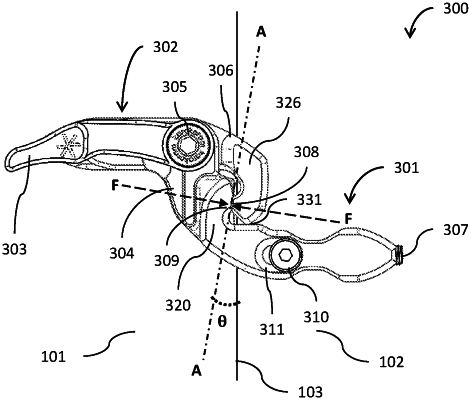| CPC A63C 5/02 (2013.01) | 19 Claims |

|
1. A splitboard joining device comprising:
a first attachment configured to attach to a first ski of a splitboard and not be removed from the first ski during normal operation;
a second attachment configured to attach to a second ski of a splitboard and not be removed from the second ski during normal operation; and
a first tension element configured to move between a first position and a second position;
wherein the first attachment and the second attachment are configured to comprise a first configuration where the first attachment and the second attachment are joined with the first tension element in the first position, thereby creating tension between the first attachment and the second attachment and compression between the first ski and the second ski at the seam of the splitboard;
wherein the first attachment and the second attachment are configured to comprise a second configuration where the first tension element is in the second position with the first attachment and the second attachment disengaged, thereby reducing tension between the first attachment and the second attachment and compression between the first ski and second ski allowing the first ski and second ski to be separated;
wherein the first attachment comprises a first element to prevent upward movement of the second ski relative to the first ski;
wherein the second attachment comprises a second element to prevent upward movement of the first ski relative to the second ski;
wherein at least either the first attachment or the second attachment further comprises a first clamping surface at an angle less than 90 degrees intersecting the seam of the splitboard, wherein in the first configuration a clamping force between the first attachment and the second attachment is generally normal to the clamping surface;
wherein the clamping force comprises component forces with a first component force being generally perpendicular to the seam of the splitboard and the second component force being in a generally vertical plane parallel to the seam of the splitboard.
|